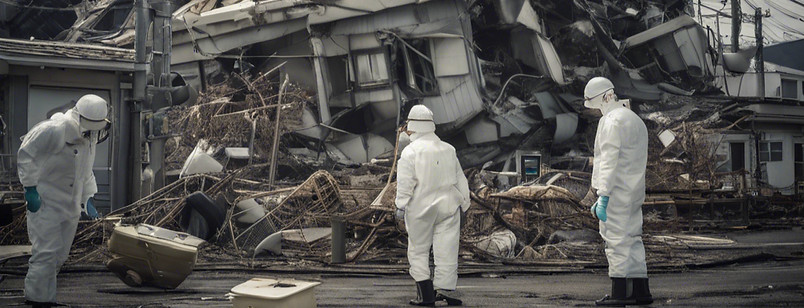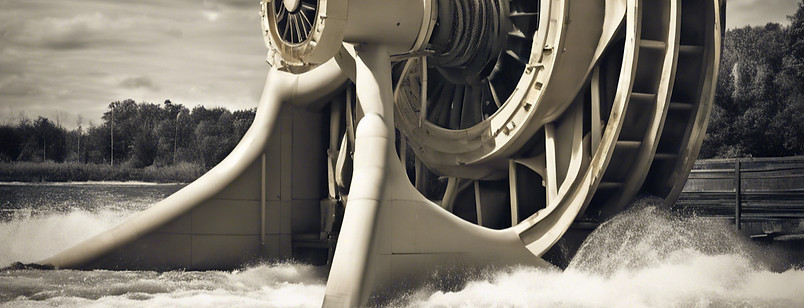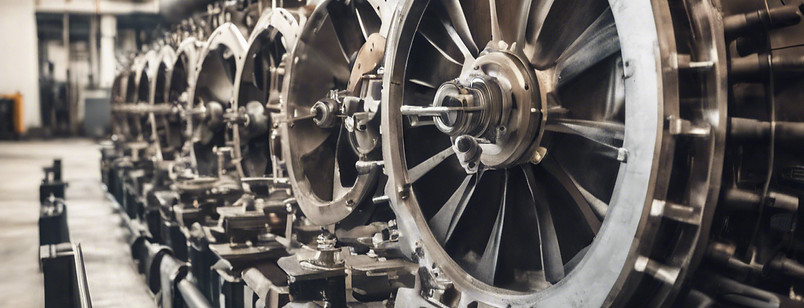
Energy Generation
& Storage
Below is a collection of revision 'flashcards' that cover the exact key terms found in the UK GCSE curriculum Design and Technology syllabus. Take your time to learn and remember the terms on each flash card. Real world examples are also provided for use in written exam answers!
Fossil Fuels
Glossary of Key Terms
-
Coal energy
-
Oil energy
-
Natural Gas energy
Listen


Coal energy, also known as coal-fired power, refers to the generation of electricity by burning coal. Coal is a fossil fuel formed from the remains of ancient plants and trees that were buried and subjected to high pressure and heat over millions of years. When burned, coal releases heat energy, which is used to produce steam in a boiler. The steam then drives turbines connected to generators, converting the kinetic energy into electrical energy. Coal energy has been a significant source of electricity generation for many years due to the abundance of coal reserves in various parts of the world. However, it also generates air pollution and greenhouse gas emissions, contributing to environmental and health concerns.

Coal Power
Plant

Oil energy, also known as petroleum energy, refers to the use of crude oil or refined petroleum products as a source of energy. Crude oil is a fossil fuel formed from the remains of ancient marine organisms buried and subjected to heat and pressure over millions of years. Oil can be refined into various products, including gasoline, diesel fuel, heating oil, and jet fuel, which are used in transportation, heating, electricity generation, and industrial processes. Oil energy plays a crucial role in the global economy as a primary source of energy for many sectors. However, its use also contributes to air pollution, greenhouse gas emissions, and environmental concerns, including oil spills and habitat destruction.

Oil Power
Plant

Natural Gas energy refers to the use of natural gas as a source of energy for various applications, including electricity generation, heating, cooking, and industrial processes. Natural gas is a fossil fuel composed primarily of methane, along with small amounts of other hydrocarbons, found deep beneath the Earth's surface. It is typically extracted from underground reservoirs through drilling and then transported via pipelines or liquefied natural gas (LNG) tankers. Natural gas is considered a cleaner-burning fossil fuel compared to coal and oil, as it emits fewer greenhouse gases and pollutants when burned. It is widely used for power generation in electricity plants, heating homes and buildings, and powering industrial machinery. However, the extraction and combustion of natural gas can still have environmental impacts, including methane emissions, groundwater contamination, and habitat disruption.

Natural Gas Power
Plant
Real World Example:
During cleanup of the Exxon Valdez spill, oil had to be collected and washed away from the surrounding area. Birds and fish were trapped in the oil slick for days as the black liquid was difficult to absorb.

The Exxon Valdez Oil Spill
On March 24 1989, an oil supertanker ship owned by Exxon Valdez ran aground on the sea floor, resulting in the ship spilling 250,000 barrels of crude oil into the sea. The impact of the accident was massive and sea life is still affected today.
Hundreds of species of animals suffered from the oil mixed in with the sea water, killing fish, birds, whales and coral sea life. The accident highlighted the dangers of transporting fossil fuels like oil in the environment. Today, companies are much more careful after learning a valuable but unfortunate lesson from Exxon Valdez.
Nuclear Power
Glossary of Key Terms
-
Nuclear fission
-
Nuclear waste
-
Chernobyl and Fukushima Disasters
Listen


Nuclear fission is a process in which the nucleus of an atom splits into two or more smaller nuclei, releasing a large amount of energy. This process occurs spontaneously in some heavy elements, such as uranium and plutonium, or can be induced by bombarding the nucleus with neutrons. When the nucleus splits, it releases additional neutrons, which can then induce fission in nearby nuclei, leading to a self-sustaining chain reaction. The energy released during nuclear fission is typically harnessed to generate electricity in nuclear power plants. Additionally, nuclear fission is used in nuclear weapons to produce explosive reactions.

Nuclear waste, also known as radioactive waste, refers to the byproducts produced during nuclear reactions, such as nuclear fission in nuclear power plants or nuclear weapons testing. This waste consists of materials that have become radioactive due to exposure to nuclear reactions and may emit harmful radiation for thousands of years. Nuclear waste can take various forms, including spent nuclear fuel, contaminated equipment and materials, and radioactive gases and liquids. Proper management and disposal of nuclear waste are essential to prevent environmental contamination and protect public health and safety.

The Chernobyl nuclear disaster occurred on April 26, 1986, at the Chernobyl Nuclear Power Plant in Pripyat, Ukraine, then part of the Soviet Union. During a safety test, a combination of reactor design flaws and human error led to a catastrophic explosion and fire in Reactor 4. The explosion released a massive amount of radioactive material into the atmosphere, contaminating the surrounding area and spreading radioactive fallout across Europe.
The immediate aftermath involved the evacuation of nearby residents, emergency response efforts to contain the fire and radioactive release, and the deployment of cleanup crews to slow down the environmental impact. The disaster resulted in numerous deaths from acute radiation sickness among plant workers and emergency responders, as well as long-term health effects and an increased incidence of cancer in the affected population.
The Chernobyl disaster remains one of the worst nuclear accidents in history, highlighting the dangers associated with nuclear power and the importance of stringent safety measures in nuclear facilities.

The Fukushima Daiichi nuclear disaster occurred on March 11, 2011, following a powerful earthquake and tsunami off the coast of Japan. The earthquake and tsunami caused widespread destruction, including damage to the Fukushima Daiichi Nuclear Power Plant, located in Fukushima Prefecture.
The tsunami flooded the plant, knocking out backup power systems and disabling cooling mechanisms for the reactors. As a result, Reactors 1, 2, and 3 experienced meltdowns, where the nuclear fuel inside the reactor cores overheated and melted. Additionally, hydrogen explosions occurred in Reactors 1, 2, and 3, releasing radioactive material into the environment.
The disaster prompted the evacuation of tens of thousands of residents from the surrounding area and raised concerns about radioactive contamination of air, soil, and water. Cleanup and containment efforts have been ongoing since the disaster, including the construction of barriers to prevent further release of radioactive material and the decommissioning of the damaged reactors.
The Fukushima Daiichi disaster is considered one of the most severe nuclear accidents since the Chernobyl disaster in 1986. It has prompted a reassessment of nuclear safety standards worldwide and led to increased scrutiny of nuclear power plants' vulnerability to natural disasters.
Renewable Energy
Glossary of Key Terms
-
Wind energy
-
Solar energy
-
Tidal energy
-
Hydro-electrical energy
-
Biomass fuels
Listen


Wind energy refers to the harnessing of the kinetic energy present in moving air to generate electricity. This is typically achieved using wind turbines, which consist of large blades mounted on a tower. As the wind blows, it causes the blades to rotate, driving a generator that converts the mechanical energy into electrical energy. Wind energy is considered a renewable and sustainable source of power, as wind is abundant and inexhaustible. It is also environmentally friendly, producing no greenhouse gas emissions or air pollutants during operation. Wind energy has become increasingly popular as a clean and renewable alternative to fossil fuels for electricity generation.

Solar energy refers to the utilization of sunlight to generate electricity or heat. This is typically accomplished using solar photovoltaic (PV) panels, which convert sunlight directly into electricity through the photovoltaic effect, or solar thermal systems, which capture sunlight to heat water or air for various applications. Solar energy is abundant, renewable, and environmentally friendly, as it produces no greenhouse gas emissions or air pollutants during operation. It is a rapidly growing source of clean energy and plays a significant role in efforts to combat climate change and reduce dependence on fossil fuels.

Tidal energy is a form of renewable energy derived from the natural rise and fall of tides in coastal areas. It harnesses the kinetic energy of moving water caused by the gravitational forces of the moon and the sun. Tidal energy can be captured using various technologies, such as tidal turbines, tidal barrages, or tidal stream generators. These devices convert the mechanical energy of tidal currents into electricity, which can then be used to power homes, businesses, and other applications. Tidal energy is considered a clean and sustainable source of power, as tides are predictable and inexhaustible, and it produces no greenhouse gas emissions or pollution during operation. However, tidal energy projects may have environmental and ecological impacts on marine ecosystems and coastal habitats, requiring careful planning and management.

Hydro-electric energy, also known as hydroelectric power or hydroelectricity, is a renewable energy source that harnesses the gravitational force of flowing or falling water to generate electricity. This is typically achieved by constructing dams on rivers or waterfalls, creating reservoirs or impoundments of water. When water is released from the reservoir, it flows through turbines, which convert the kinetic energy of the moving water into mechanical energy. The turbines then drive generators that produce electricity. Hydroelectric energy is considered a clean and sustainable source of power, as it produces minimal greenhouse gas emissions and pollution during operation. It is one of the largest sources of renewable electricity worldwide and plays a significant role in meeting energy demands while reducing reliance on fossil fuels. However, the construction of dams and reservoirs for hydroelectric projects can have environmental and social impacts, including habitat disruption, loss of biodiversity, and displacement of communities.

Biomass energy is a renewable energy source derived from organic materials like wood, agricultural residues, and animal waste. These materials can be converted into heat, electricity, or biofuels through processes like combustion, fermentation, or anaerobic digestion. Biomass energy helps reduce greenhouse gas emissions and dependence on fossil fuels but requires sustainable management to minimize environmental impacts. A drawback to using Biomass is that large areas of land are needed to grow crops which may lead to habitat changes and an effect on animal life.
Real World Example:
The Hoover Dam, USA
Imagine a giant wall, thicker at the bottom than at the top, curving across a roaring river in a hot desert. That's basically the Hoover Dam!
Built during the 1930s, it's not just impressive to look at, it's a super-powered machine. This dam tames the wild Colorado River, holding back floods and generating electricity to light up homes like yours. It also helps deliver water to farms and cities, making the desert bloom! No wonder it's a popular tourist stop – it's a concrete giant that changed the southwest US.

Energy Storage Systems
Glossary of Key Terms
-
Kinetic Pump Systems
-
Batteries
-
Flywheels
-
Clockwork springs
Listen


A kinetic pump system is a type of pump that utilizes the kinetic energy of flowing water to turn a turbine to create energy. Kinetic pump systems can be used to generate electricity quickly in times when more electricity is needed. For example, if there is a power outage in a city, water can be released from a higher elevation that falls through turbines. This creates emergency power to keep electricity stable and consistent for users in a city.
One technique of kinetic pump systems is storing water in large tanks that are placed on trains on a high hill. When extra or emergency power is needed, the trains release the water down the hill which turns turbines, converting gravitational potential energy to kinetic energy. The kinetic energy is then converted and stored in generators.

Batteries are devices that store chemical energy and convert it into electrical energy when needed. They consist of one or more electrochemical cells, each containing positive and negative electrodes (anode and cathode) separated by an electrolyte. When the battery is connected to an external circuit, chemical reactions occur at the electrodes, generating electrons that flow through the circuit, producing electric current.
There are several types of batteries, including:
-
Lead-Acid Batteries: Commonly used in automotive applications, lead-acid batteries consist of lead dioxide (positive electrode), lead (negative electrode), and a sulfuric acid electrolyte.
-
Lithium-Ion Batteries: Widely used in portable electronic devices like smartphones and laptops, lithium-ion batteries offer high energy density, lightweight, and long cycle life. They use lithium compounds as the active material in the electrodes.
-
Nickel-Metal Hydride (NiMH) Batteries: Similar to NiCd batteries but with a higher energy density and reduced environmental impact, NiMH batteries use nickel oxyhydroxide (positive electrode), hydrogen-absorbing alloy (negative electrode), and potassium hydroxide electrolyte.
-
Alkaline Batteries: Widely available and affordable, alkaline batteries use manganese dioxide (positive electrode), zinc powder (negative electrode), and potassium hydroxide electrolyte.
-
Lithium Polymer (LiPo) Batteries: Similar to lithium-ion batteries but with a flexible and lightweight polymer electrolyte, LiPo batteries are commonly used in drones, radio-controlled vehicles, and portable electronics.
Each type of battery has its own unique characteristics, advantages, and limitations, making them suitable for different applications and environments.

Alkaline Batteries: These single use batteries are the most common batteries used by consumers. They are very safe to use, with a low voltage. These batteries can be used together in series to increase voltage.

Rechargable Batteries: These batteries are very similar to Alkaline batteries, however they are much more sustainable because they can be recharged. These batteries have a slightly lower voltage than alkaline batteries.

LiPo Batteries: These batteries come in various sizes and shapes and are able to output a higher voltage than alkaline batteries. These batteries are found in remote control cars or drones.

Lead-Acid Batteries: Lead Acid batteries are a little more dangerous than other batteries. These batteries are usually larger, such as the battery found in a car engine. Lead Acid can be quite dangerous to the environment as the acid can harm animals and habitats if not discarded properly.

Flywheels are mechanical devices used to store rotational energy. They consist of a heavy rotating disk or wheel mounted on a shaft. When energy is supplied to the flywheel, such as through mechanical or electrical means, it accelerates and stores this energy in the form of rotational kinetic energy. Flywheels can then release this stored energy when needed, either to perform mechanical work or to stabilize the rotation of a system. They are commonly used in various applications, including energy storage systems, automotive engines, and industrial machinery, to provide stability, improve efficiency, and smooth out fluctuations in energy supply and demand.

Clockwork springs, also known as mainsprings, are mechanical devices used to store potential energy in a coiled form. They consist of a tightly wound spiral of metal, typically steel or brass, which is housed within a cylindrical container. When the spring is wound, mechanical energy is stored in the form of tension within the coil. This energy can then be gradually released to power various mechanical devices, such as clocks, watches, toys, and other mechanisms. The controlled release of energy from the mainspring drives the movement of gears and other components in these devices, allowing them to perform their intended functions.
Real World Example:
Rolex
In the age of smartphones and wearable tech, it might be hard to understand why customers still prefer to buy watches with mechanical movements and clockwork springs. After all, an Apple smartwatch provides a lot more features and technology from fitness tracking to notifications.
Rolex, founded in 1905 in London, is the most famous luxury watch company today. Their analog watches are beautifully handcrafted with tiny mechanisms and movements. Customers still appreciate the fine detail and craftsmanship of Rolex watches, with the most expensive watch being sold for US 17.7 million dollars! There is beauty in even the smallest precision movements and customers are willing to pay for it!

Take a look at the complex gears, linkages, types of movements and rotary motions all packed into an area no larger than the width of your wrist!

